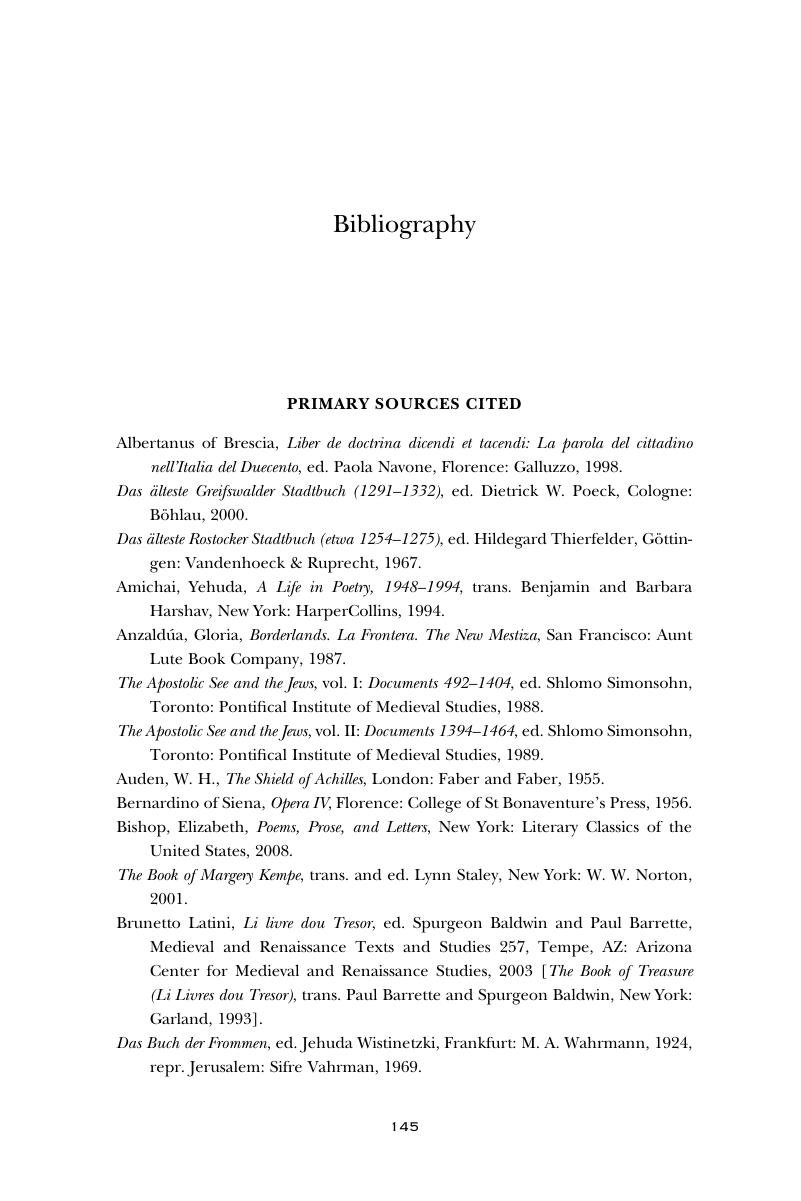Book contents
- Cities of Strangers
- The Wiles Lectures
- Cities of Strangers
- Copyright page
- Contents
- Figures
- Maps
- Acknowledgements
- Maps
- Chapter 1 Cities and Their Strangers
- Chapter 2 Strangers into Neighbours
- Chapter 3 Jews: Familiar Strangers
- Chapter 4 Women: Sometimes Strangers in Their Cities
- Conclusion
- Notes
- Bibliography
- Index
- References
Bibliography
Published online by Cambridge University Press: 09 March 2020
- Cities of Strangers
- The Wiles Lectures
- Cities of Strangers
- Copyright page
- Contents
- Figures
- Maps
- Acknowledgements
- Maps
- Chapter 1 Cities and Their Strangers
- Chapter 2 Strangers into Neighbours
- Chapter 3 Jews: Familiar Strangers
- Chapter 4 Women: Sometimes Strangers in Their Cities
- Conclusion
- Notes
- Bibliography
- Index
- References
Summary

- Type
- Chapter
- Information
- Cities of StrangersMaking Lives in Medieval Europe, pp. 145 - 184Publisher: Cambridge University PressPrint publication year: 2020

